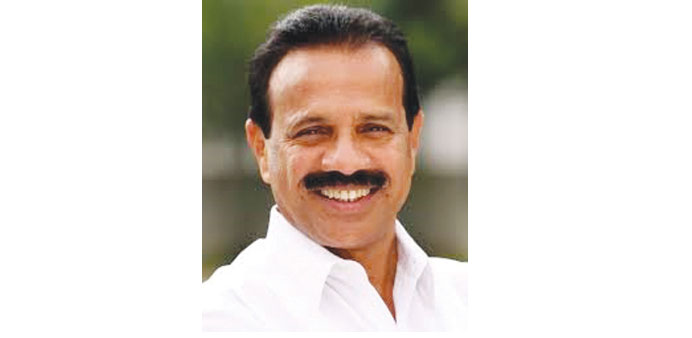By Ashraf Padanna/Thiruvananthapuram
The decision to allow 100% foreign direct investment in the Indian Railways, one of the world’s largest railway networks, will change the face of the cash-strapped public sector behemoth, a minister said yesterday.
Besides high-speed rail corridors and bullet trains, the government hopes to attract foreign as well as private capital to unleash its excess capacities like huge land bank at its more than 7,000 stations spread across the country.
Railway Minister D V Sadananda Gowda, who assumed office just three months back, said investors would be invited to set up leisure centres, multiplexes, five-star hotels, underground parking facilities and other passenger amenities at these stations.
“I only want the ground level to run my trains. Let the private players take all other floors and develop world-class facilities. They can hold it for 30-35 years on lease,” Gowda said.
His proposals include Wi-Fi in select stations and on trains, food courts and battery-operated cars for the physically challenged at major stations. He had also announced a “diamond quadrilateral network” of high-speed trains linking the four corners of the country and a Mumbai-Ahmedabad bullet train.
“So many private players are coming to us with various proposals. Initially, we are planning to raise ten stations to international standards,” Gowda said in Kochi.
On Wednesday, the government notified the liberalised foreign investment norms for rail infrastructure, allowing 100% FDI through automatic route in a wide spectrum of development. Train operations and safety are exempted from this.
They include construction, operation and maintenance of high-speed trains, suburban corridors, dedicated freight lines, rolling stocks, locomotives manufacturing and maintenance facilities, electrification and signalling systems, freight and passenger terminals, industrial parks and mass rapid transport systems.
The minister hoped that foreign players would bring in funds and technology for fast-tracking big-ticket projects. They will also be offered equity participation in the monopoly state-run firms.
The diamond quadrilateral is estimated to cost Rs9,000bn, while the proposed bullet train needs Rs600bn at current prices. The railways, which now has a hands-to-mouth existence, would require another Rs5,000bn to complete the ongoing projects in a decade.
Prime Minister Narendra Modi, who is heavily banking on partial privatisation of the railways and bringing in foreign capital and technology in defence production by raising the cap on investments to 49% to revive the economy and create jobs, has reportedly put it high on his agenda during his visit to Tokyo.
China, which boasts of the largest high-speed rail network in the world, has also reportedly emerged as a tough competitor for Japan in its India bid. Chinese President Xi Jinping is due in India next month.
India plans to build high-speed train networks on Delhi-Agra, Delhi-Chandigarh, Mysore-Bangalore-Chennai, Mumbai-Goa and Hyderabad-Secunderabad routes as well, with a maximum speed of 320km per hour.
The railways has decided to prioritise 30 projects to be expedited this year. The minister said his ministry would take up the proposed suburban rail in Kerala if the state government provides land and mobilise funds.

u201cSo many private players are coming to us with various proposals. Initially, we are planning to raise ten stations to international standardsu201d


